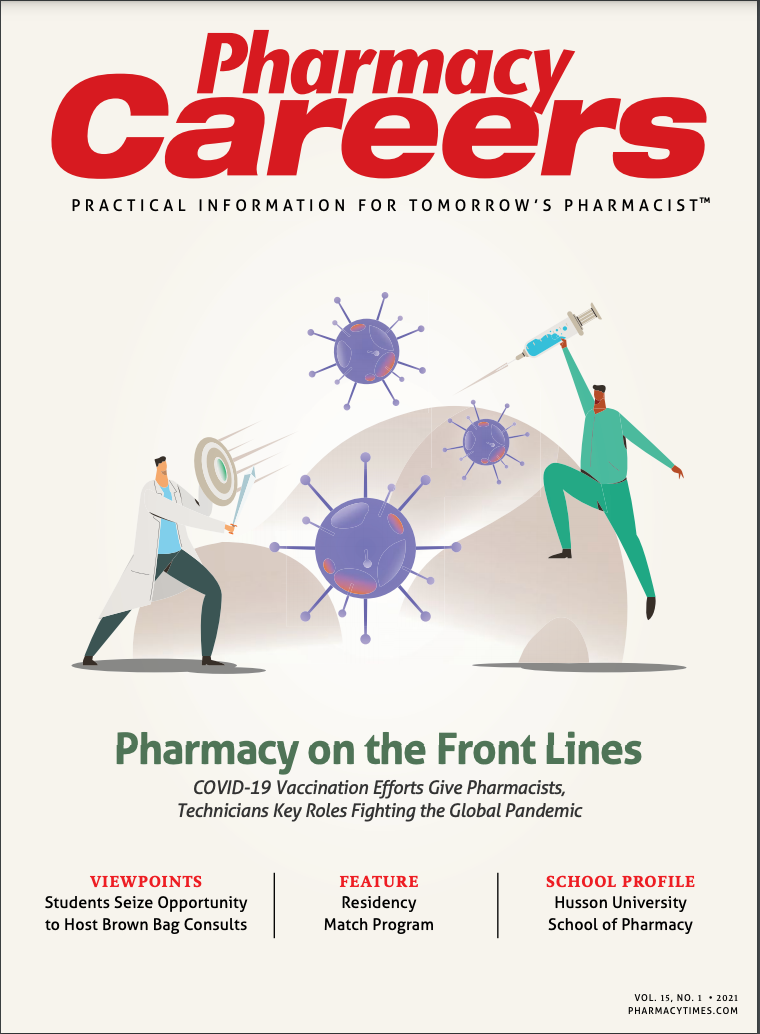Publication
Article
Pharmacy Careers
Veteran Care Should Be Added to PharmD Curriculum
Author(s):
Studies show a need for coordination between the VA health care system and non-VA health care practices to decrease confusion and duplication of services.
In 2018, there were approximately 18 million military veterans in the United States.1 Veterans are eligible to receive health care at both civilian facilities and Veterans Affairs (VA) sites, and so health care providers (HCPs) must be able to provide not only quality but also culturally sensitive care to this population.
Results of a mixed-methods study showed that many of the nurse participants were unsure of what financial and medical benefits veterans receive, nor did they believe they knew of all the resources available to help veterans.2 Results of another qualitative study showed that non-VA HCPs ranked the ability to identify veterans within their patient population as crucial to determine optimal treatment and navigate referrals for these patients. In the study, participants also expressed a lack of training in veteran culture.3
These studies show a need for coordination between the VA health care system and non-VA health care practices to decrease confusion and duplication of services. Understanding the veteran population and integrating the knowledge into a pharmacy school's curriculum may benefit both veterans and HCPs.4
Veterans' health care includes their mental health. According to a 2014 study in JAMA Psychiatry, nearly 1 in 4 active duty members showed signs of a mental health condition.5 Service-related stressors often lead to substance-use disorder, and many veterans have an alcohol, tobacco, or drug-related problem. Posttraumatic stress disorder is very common in veterans and has been shown to be more than 4 times higher in veterans (36%) than nonveterans (8%). Depression is also seen often in veterans, with a 14% rate of diagnosis; it is estimated that each day, 18 to 22 veterans commit suicide in the United States.4
Because of the many mental health disorders in the veteran population, there is a strong need to bring awareness and additional training to HCPs.6
There are many steps that can be taken to meet the goal of implementing veteran content into a pharmacy health care curriculum, including4:
- providing presentations and seminars on veteran content;
- identifying specific courses to create a curriculum map showing where veteran content occurs;
- hiring faculty with veteran and military backgrounds and experiences;
- providing clinical experiences for students with veteran patients of different war eras, branches of services, and military experience backgrounds;
- providing veteran simulations and case studies;
- giving students the opportunity to develop individualized patient plans and SOAP (subjective, objective, assessment, and plan) notes that reflect the needs of veteran patients;
- using the Standardized Client Program to incorporate realistic simulation of the care of the veteran population;
- providing specific electives so students can further their knowledge in the area of veteran health; and
- planning for pharmacy students to attend clinical rotations centered around VA hospitals, TriCare clinics, and military bases.
Civilian providers without training or exposure to a military background may have less ability to provide culturally competent care, limited perception of the impact their service time has on their health status, and decreased ability to empathize with this population. Of all the possible HCPs, pharmacists are the most easily and readily accessible to patients, making this an optimal place to start implementing some of these steps.
Veterans are a special population, and reintegration into civilian life can be very complex. After they leave service, veterans no longer have a chain of command continually available for guidance, they lose contact with their peers who can empathize with the share experience of active service, and they have difficulty figuring out "what's next." The transition into civilian life is not one to take lightly; a veteran's entire world—their everyday routine for years—is flipped upside down, and they no longer have their work family by their side. It's important to instill skills in future pharmacists to help veterans receive optimal care and empathy.
Exposing pharmacy students to veteran culture, basic military facts (eg, ranks, insurance), work responsibilities, and unique challenges of daily life will ultimately help prepare HCPs to provide the best care possible to US veterans.
REFERENCES
1. Census Bureau Releases New Report on Veterans [news release]. June 2, 2020. US Census Bureau. Accessed April 16, 2021. https://www.census.gov/newsroom/press-releases/2020/veterans-report.html
2. Elliott B. Civilian nurses' knowledge, confidence, and comfort caring for military veterans: survey results of a mixed-methods study. Home Healthc Now. 2018;36(6):356-361. doi:10.1097/NHH.000000000000000698
3. Vest BM, Kulak J, Homish GG. Caring for veterans in US civilian primary care: qualitative interviews with primary care providers. Family Pract. 2019;36(3):343-350. doi:10.1093/fampra.cmy078
4. Olenick M, Flowers M, Diaz VJ. US veterans and their unique issues: enhancing health care professional awareness. Adv Med Educ Pract. 2015;6:635-639. doi:10.2147/AMEP.S89479
5. National Alliance on Mental Health. Veterans & Active Duty. NAMI. Accessed April 16, 2021. https://www.nami.org/Your-Journey/Veterans-Active-Duty
6. Gaglioti A, Cozad A, Wittrock S, et al. Non-VA primary care providers' perspectives on comanagement for rural veterans. Mil Med. 2014;179(11):1236-1243. doi:10.7205/MILMED-D-13-00342
ABOUT THE AUTHOR
Nicole Mehan is a 2021 PharmD candidate at the High Point University Fred Wilson School of Pharmacy in North Carolina.

Newsletter
Stay informed on drug updates, treatment guidelines, and pharmacy practice trends—subscribe to Pharmacy Times for weekly clinical insights.






